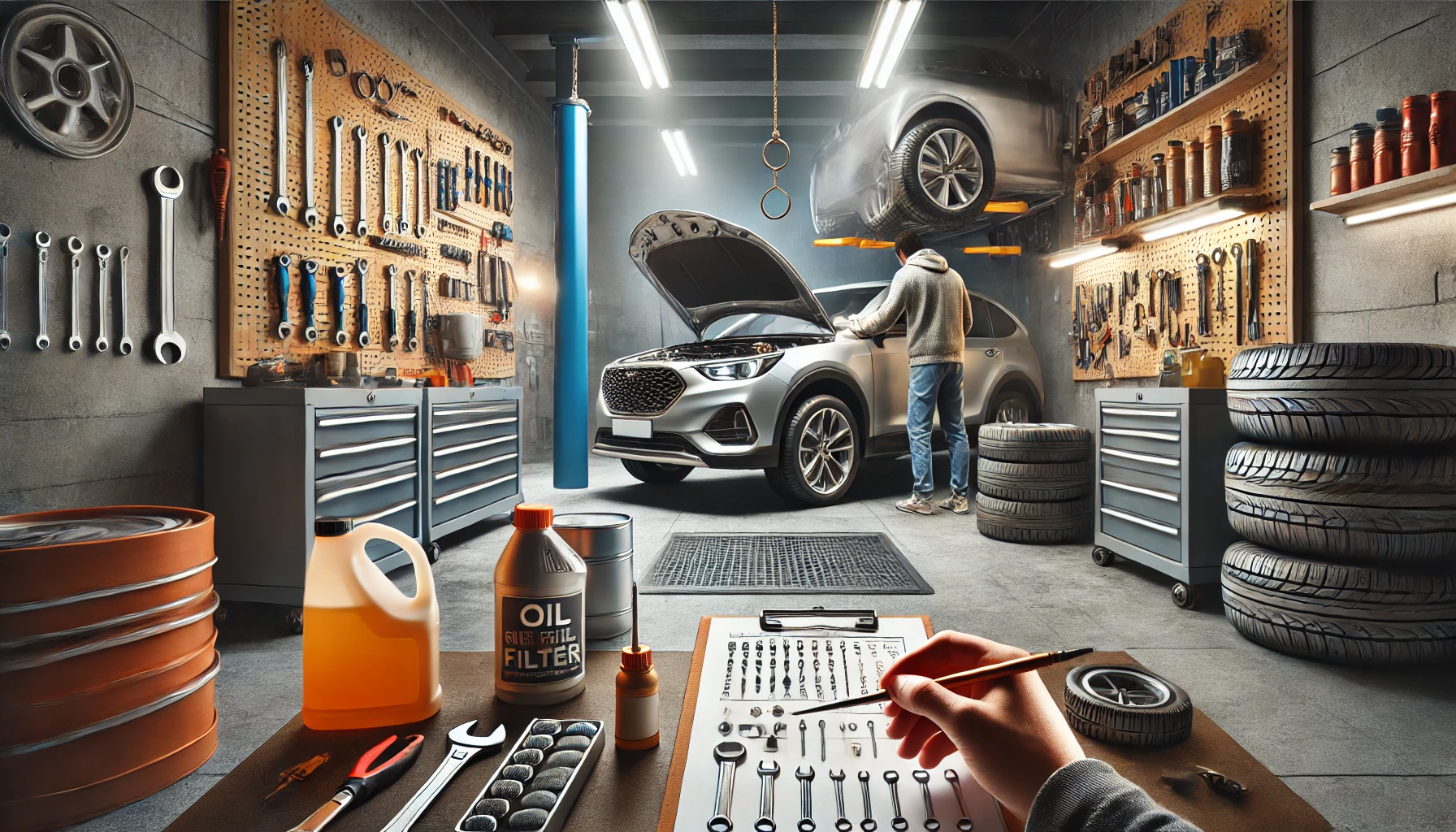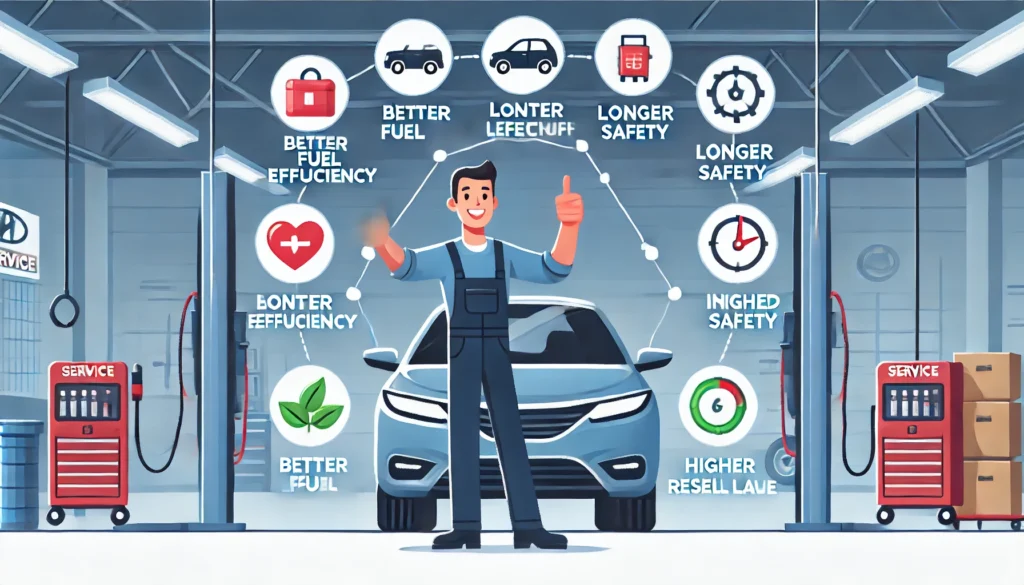ntroduction
Owning a autocar Maintenance is a big responsibility. Regular maintenance is crucial to keep your vehicle running smoothly and efficiently. In this guide, we’ll cover everything you need to know about how to maintain your car for optimal performance. From regular checks to understanding warning signs, we’ve got you covered. Let’s dive in!
Regula Car Maintenance Checks
Regular maintenance checks are the backbone of Car Maintenance care. These simple tasks can prevent major problems and extend the life of your vehicle.
Checking the Oil
One of the most important maintenance tasks is checking the oil. Your engine relies on clean oil to run smoothly. Dirty or low oil can cause serious damage.
- How to Check Oil Levels:
- Park your car on a level surface and turn off the engine.
- Locate the dipstick, pull it out, and wipe it clean.
- Reinsert the dipstick fully, then pull it out again to check the oil level.
- If the oil is below the recommended level, add more oil.
- When to Change the Oil:
- Most cars need an oil change every 3,000 to 5,000 miles. Check your owner’s manual for specific recommendations.
Inspecting Tires
Tires are crucial for safety and performance. Regular inspections can help you avoid blowouts and improve fuel efficiency.
- Tire Pressure:
- Check tire pressure monthly. Underinflated tires can cause poor handling and reduce fuel efficiency.
- Use a tire gauge to ensure the pressure matches the manufacturer’s recommendations.
- Tire Tread:
- Inspect the tread for wear. If the tread is worn down to 2/32 of an inch, it’s time to replace the tires.
- Use a penny to check tread depth. Insert the penny into the tread with Lincoln’s head facing down. If you can see the top of Lincoln’s head, the tread is too worn.
Battery Car Maintenance
A well-maintained battery ensures your Car Maintenance starts reliably.
- Cleaning Battery Terminals:
- Inspect the battery terminals for corrosion. Clean them with a mixture of baking soda and water, then rinse with clean water.
- Ensure the battery is securely mounted.
- Testing Battery Health:
- Use a voltmeter to check the battery’s voltage. A fully charged battery should read about 12.6 volts or higher.
- If the battery is over three years old, consider having it tested by a professional.
Fluids and Filters
Your Car Maintenance relies on various fluids and filters to run efficiently. Regularly checking and replacing these can prevent breakdowns and costly repairs.
Coolant
Coolant keeps your engine from overheating. Low coolant levels can cause engine damage.
- Checking Coolant Levels:
- Ensure the engine is cool before checking the coolant.
- Locate the coolant reservoir and check the level against the markings. Add coolant if necessary.
- Flushing the Coolant System:
- Flush the coolant system every 30,000 miles or as recommended by your manufacturer to remove rust and debris.
Transmission Fluid
Transmission fluid keeps your gears shifting smoothly. Low or dirty fluid can cause transmission problems.
- Checking Transmission Fluid:
- With the engine running and the Car Maintenance in park, pull out the transmission dipstick.
- Wipe it clean, reinsert it, then pull it out again to check the fluid level.
- Changing Transmission Fluid:
- Transmission fluid should be changed every 30,000 to 60,000 miles, depending on your vehicle.
Brake Fluid
Brake fluid is essential for safe stopping. Low or contaminated fluid can lead to brake failure.
- Checking Brake Fluid:
- Locate the brake fluid reservoir and check the level. It should be between the minimum and maximum marks.
- Replacing Brake Fluid:
- Brake fluid should be replaced every two years or as specified in your owner’s manual.
Air Filters
Air filters keep dirt and debris out of your engine and cabin.
- Engine Air Filter:
- Check the engine air filter every 12,000 miles. Replace it if it’s dirty or clogged.
- Cabin Air Filter:
- The cabin air filter should be replaced every 15,000 to 30,000 miles to ensure clean air inside your car.
Belts and Hoses
Belts and hoses are vital for various engine functions. Regular inspections can prevent breakdowns.
Inspecting Belts
- Drive Belts:
- Check for cracks, fraying, or glazing. Replace any damaged belts immediately.
- Timing Belt:
- The timing belt should be replaced according to your manufacturer’s recommendations, usually every 60,000 to 100,000 miles.
Inspecting Hoses
- Coolant Hoses:
- Look for leaks, cracks, or bulges. Replace any damaged hoses to prevent coolant loss.
- Vacuum Hoses:
- Inspect for cracks or loose connections. Damaged vacuum hoses can affect engine performance.
Electrical System
The electrical system powers everything from your headlights to your radio.
Checking Lights
- Headlights and Taillights:
- Regularly check all lights to ensure they’re working. Replace any burnt-out bulbs promptly.
- Dashboard Warning Lights:
- Pay attention to warning lights on your dashboard. They can indicate issues that need immediate attention.
Inspecting Fuses
- Fuse Box:
- Locate the fuse box and check for blown fuses. Replace any that are burnt out.
Maintaining the Exterior
Keeping the exterior of your Car Maintenance in good condition not only looks nice but also protects your vehicle.
Washing and Waxing
- Regular Washing:
- Wash your Car Maintenance regularly to remove dirt, salt, and other contaminants. This prevents rust and paint damage.
- Waxing:
- Wax your Car Maintenance every three months to protect the paint and maintain a glossy finish.
Inspecting for Rust
- Rust Prevention:
- Regularly inspect your Car Maintenance for rust, especially in areas prone to moisture. Treat any rust spots promptly to prevent spreading.
Interior Car Maintenance
A clean interior makes your Car Maintenance more comfortable and can improve resale value.
Cleaning the Interior
- Vacuuming:
- Vacuum seats, carpets, and floor mats regularly to remove dirt and debris.
- Cleaning Surfaces:
- Use appropriate cleaners for your dashboard, windows, and upholstery to keep them looking new.
Protecting Upholstery
- Seat Covers:
- Consider using seat covers to protect your upholstery from stains and wear.
- Floor Mats:
- Use floor mats to protect your car’s carpets. Clean them regularly to prevent dirt buildup.
Seasonal Car Maintenance Tips
Different seasons require specific maintenance tasks to keep your Car Maintenance running smoothly.
Winter Maintenance
- Battery Check:
- Cold weather can strain your battery. Have it tested before winter starts.
- Tire Pressure:
- Check tire pressure more frequently in winter, as cold temperatures can cause it to drop.
- Antifreeze:
- Ensure your coolant system is filled with the correct mix of antifreeze and water to prevent freezing.
Summer Maintenance
- Cooling System:
- Check your coolant level and inspect the radiator and hoses for leaks.
- Air Conditioning:
- Test your air conditioning system to ensure it’s working before the heat of summer hits.
Understanding Warning Signs
Being aware of warning signs can help you address issues before they become major problems.
Strange Noises
- Squealing Brakes:
- Squealing brakes can indicate worn brake pads that need replacing.
- Engine Knocking:
- Knocking noises from the engine can signal a serious issue. Have it checked by a professional.
Warning Lights
- Check Engine Light:
- A check engine light can indicate various issues, from a loose gas cap to a serious engine problem. Don’t ignore it.
- Oil Pressure Light:
- If the oil pressure light comes on, stop your Car Maintenance immediately and check the oil level.
Conclusion
Maintaining your Car Maintenance for optimal performance is all about regular checks and being proactive. By following these tips, you can ensure your vehicle runs smoothly and safely for years to come. Remember, a little effort in maintenance can save you a lot of trouble and expense in the long run.
FAQs
How often should I check my car’s oil level? Check your car’s oil level at least once a month. Regular checks help ensure your engine runs smoothly and prevents damage.
What is the recommended tire pressure for my car? The recommended tire pressure can be found in your owner’s manual or on a sticker inside the driver’s door. Check it monthly to maintain fuel efficiency and handling.
How do I know when to replace my brake pads? If you hear a squealing noise when braking or if the brake pedal feels soft, it’s time to check your brake pads. Replace them if they are worn down to 1/4 inch.
Why is my check engine light on? The check engine light can come on for various reasons, from a loose gas cap to a serious engine issue. It’s best to have it diagnosed by a professional.
When should I replace my car’s air filter? Replace your car’s engine air filter every 12,000 to 15,000 miles, or as recommended by your manufacturer. A clean air filter improves engine performance and fuel efficiency.
How often should I flush my car’s coolant system? Flush your car’s coolant system every 30,000 miles or as recommended by your manufacturer. Regular flushing removes rust and debris, keeping your engine cool.


